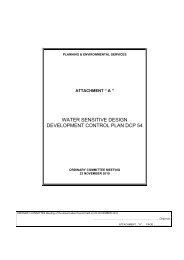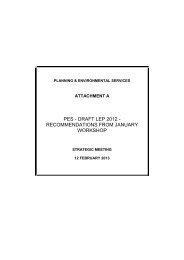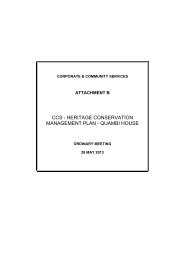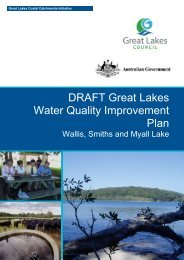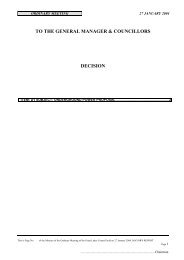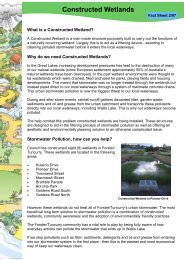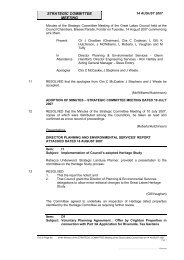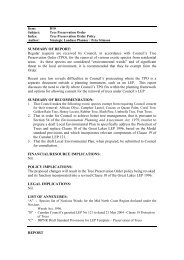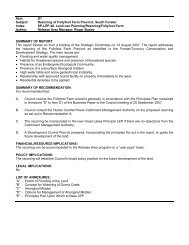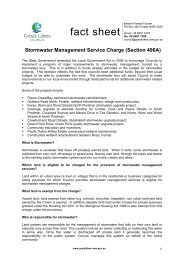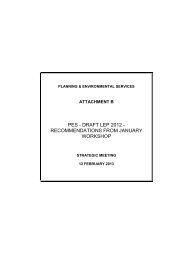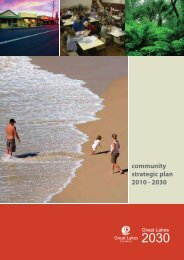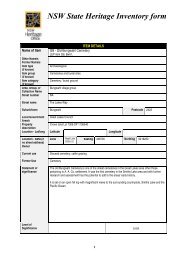13.2 The Wallis Lake Estuary Management Committee - Great Lakes ...
13.2 The Wallis Lake Estuary Management Committee - Great Lakes ...
13.2 The Wallis Lake Estuary Management Committee - Great Lakes ...
You also want an ePaper? Increase the reach of your titles
YUMPU automatically turns print PDFs into web optimized ePapers that Google loves.
<strong>Wallis</strong> <strong>Lake</strong> <strong>Estuary</strong> <strong>Management</strong> Plan<br />
<strong>Management</strong> Objective Increase awareness of the role of estuarine habitats such as mangroves, saltmarshes, seagrasses, wetlands and riparian<br />
vegetation and the link provided by groundwater<br />
C.3<br />
<strong>Management</strong> Area A, B, C, D, E, F<br />
Action<br />
No<br />
C.3.1<br />
C.3.2<br />
C.3.3<br />
Action<br />
Hold community education field days on a regular basis with talks and guided<br />
tours of local areas with significant habitat value<br />
Utilise community group newsletters and the GLC website to disseminate<br />
information on the physical features and ecological roles of estuarine habitats<br />
and groundwater<br />
Prepare an education information pack or similar on the physical features and<br />
ecological roles of estuarine habitats and distribute to residents around the<br />
estuary<br />
Indicative<br />
Cost<br />
Priority Responsibilities Progress<br />
$1,500 Medium (B5) GLC, DPI<br />
per year<br />
Staff time Medium (B5) GLC<br />
$15,000 Medium (B5) GLC<br />
Comments<br />
Educational material should identify the following attributes of mangrove, saltmarsh, seagrass, wetland and riparian vegetation habitats:<br />
• physical and structural features (eg soft versus hard substrate, vegetated versus unvegetated, sub-tidal versus inter-tidal)<br />
• ecological role and biological processes (eg recycling of nutrients, bank stabilisation, provision of juvenile habitat, source of organic matter), and<br />
• weeds versus native species.<br />
[See NSW DPI 1999 for information]<br />
In response to community concern in regards to wetland areas, information should be provided on natural mosquito control and on smell. Information should also be provided on<br />
seagrass ecology including shedding of leaves.<br />
NB: This strategy augments action 2.7 of the WLCMP to ‘develop and implement a community education program to highlight the value of wetlands’.<br />
88




